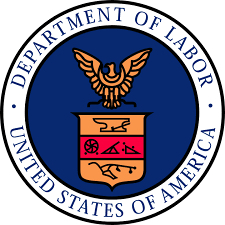Benjamin P. Kahn
On January 16, 2020, the U.S. Department of Labor, Wage and Hour Division (“DOL”), published a new final rule on joint-employer status under the Fair Labor Standards Act (“FLSA”) in the Federal Registry, which will be effective March 15, 2020. If two companies are joint employers of an employee, they are jointly and severally liable for compliance and damages under the FLSA. The DOL updated its joint-employer regulation to promote certainty for employers and employees, reduce litigation, promote greater uniformity among court decisions, and to encourage innovation in the economy. The regulations set out two scenarios where there could be joint employer status. The first scenario encompasses the situation where a third-party simultaneously benefits from the employees’ work for the employer. The second scenario is where the employee works for two different employers that are sufficiently associated to be considered joint-employers. Because the first scenario entails a more complicated analysis and is a more common focus of litigation, this article is dedicated to it.
The three most significant parts of the new regulations are 1) the adoption of a four-factor balancing test to determine joint-employer status, 2) the identification of factors that are not relevant to joint-employer status, and 3) eleven helpful examples to help employers and courts apply the new regulations.
Four-Factor Balancing Test to Determine Whether A Third-Party Is a Joint-Employer.
The four factors to analyze the potential joint-employer’s relationship with the employee are whether the potential joint-employer:
(i) Hires or fires the employee;
(ii) Supervises and controls the employee’s work schedule or conditions of employment to a substantial degree;
(iii) Determines the employee’s rate and method of payment; and
(iv) Maintains the employee’s employment records.
The regulations emphasize that the third-party must actually exercise, directly or indirectly, one of these four “indicia of control” to be considered a joint-employer; it is not enough that the third-party has the ability or power to take action as to the employer. For instance, contractual language that grants or reserves the third-party the right to take one of these actions, alone, is irrelevant unless the third-party actually takes the action.
Hence, third-parties do not have to contractually concede control of who is doing work for them and how that work is being done in fear of automatically triggering joint-employer status. Additionally, third-parties can contractually require employers to comply with specific legal obligations, meet health and safety standards, or include monitoring and enforcement agreements without creating joint-employer status. A third-party’s requirements also can include requiring the employer to be FLSA compliant, to institute anti-harassment policies and background checks, and to including standards in its employee handbook without raise joint-employer issues.
The regulations also give companies further leeway by including a very narrow definition of “indirect control.” The third-party exercises “indirect control” of the employee only if they give “mandatory directions to another employer that directly controls the employee.” What is explicitly not included as “indirect control” are the third-party’s requests, recommendations, or suggestions. Essentially, as long as the employer can voluntarily make the decision after receiving the request from the third-party, the mere ability to make the request is not relevant to the third-party’s joint employer status. This can include the third-party requesting for the employer to remove an employee, as long as the ultimate decision to remove or ultimately terminate the employee is the employer’s voluntary decision. This can also include a third-party (such as an association) offering its members’ employees optional benefits including group health coverage and a pension plan.
In addition to the four factors, the regulations concede that “additional factors may be relevant” to determining joint-employer status but emphasize that such additional factors must indicate that the third-party “exercises significant control over the terms and conditions of the employee’s work.” In the supplemental information, the DOL explained that it included the possibility of “additional factors” to recognize that courts do not “blindly” apply the four factors.
Irrelevant Factors to the Determination of Joint-Employer Status
The DOL deemed irrelevant numerous factors, which in the past have been used to argue joint-employer status exists. Most significantly, the regulations indicate that “whether the employee is economically dependent” on the third-party has no relevance to the third-party’s joint-employer status. The regulations listed other examples of irrelevant economic dependence including (1) whether the employee is in a specialty job or a job that requires skill and initiative, (2) whether the employee has an opportunity for profit or loss based on her skill, (3) whether the employee invests in equipment or material required for the work, and (4) the number of contractual relationships, other than with the employer, that the third-party has entered into to receive similar services. Deeming these factors as irrelevant to the issue of joint-employer status is significant because they allow the third-party to be more appropriately focused on its direct and indirect relationship with the employee and the four primary factors, without having to worry that action taken by the employee or economic realities, including the third-party’s overall business model, will undercut the analysis and create a joint-employer status. Of course, it is unknown how closely courts will follow the DOL’s direction that economic dependence is irrelevant.
Perhaps the most sweeping part of the new regulations is that whether the third-party and employer are in a franchisor-franchisee relationship has no relevance to whether the third-party has joint employer status with the employer. Additionally, included as not being relevant were brand and supply agreements and similar business models. The DOL explained that these types of relationships are based on business relationships and economic features of business models –rather than the relationships between employers and employees, which is the focus of the FLSA. Other economic relationships that are irrelevant to the joint employer status is if the employer operates a business on the third-party’s premises, if the third-party and the employer jointly participate in an apprenticeship program, and if the third-party provides the employer with a sample employee handbook. The regulations also allow the third-party to require quality control standards and to specify and monitor the size, scope, and deadlines of projects.
Examples of Joint-Employer Status Analysis
In addition to the technical elements, the DOL provided eleven samples of common situations to help illustrate how the regulations should be applied and to give guidance to companies. Included in the examples are restaurants, offices hiring a janitorial company, packaging companies, staffing agencies, associations with members, large national companies with other businesses in their supply chain, large franchisors, and retail companies contracting with maintenance companies. The examples are not intended to be industry specific and can be widely applied, and courts will likely fill in the gaps.
Conclusion
The new joint-employer regulations give companies the ability to take steps to avoid joint-employer status and will require courts to examine the actual relationship between companies and workers to determine joint-employer status, instead of the labels put on those relationships.

Benjamin P. Kahn
bpk@kullmanlaw.com
The Kullman Firm
www.kullmanlaw.com
